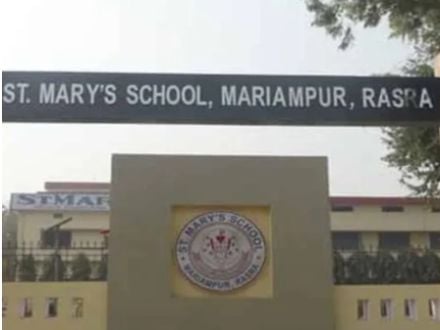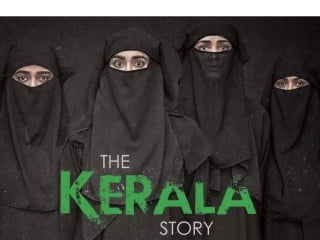
Public domain documents submitted by non-profit organizations in USA and India to their respective Government agencies reveal Church Planting to be a major activity that is financially supported by such non-profits.
Nomenclature
US Laws: Non-profit, tax-exempt organizations in the US need to file an annual tax return with their Internal Revenue Service in a form called Form-990.
Several charity watch groups in the US, in turn, host the completed Form-990 of tax-exempt organizations on their websites in an effort to improve transparency. This article peruses a few such forms for India-specific activities.
Certain non-profits, however, exploit a “feature” in the US law: organizations which are deemed to be a religious order are exempted from filing Form-990. For instance, the Texas-based Gospel For Asia (IndiaFacts expose), the Michigan-based Mission India (IndiaFacts exposes: 1, 2, 3) and the California-based Goodnews for India which remit humongous sums to their respective franchisees in India are exempted from filing Form-990. This article obviously, will not be able to examine the US financial statements of such religious orders as none exist in the public domain.
Indian Laws: Organizations (colloquially called NGOs) in India receive such donations from the US and other countries to carry out their agenda in India.
FCRA is the law which governs the transfer of money from abroad to such Indian NGOs. NGOs desirous of receiving foreign funds should register themselves with the Ministry of Home Affairs (MHA) under FCRA. In this report, we shall refer to such NGOs as FCRA-NGOs.
FCRA-NGOs need to file an annual financial return with the MHA before December every year. Indeed, the MHA has been doing an excellent job in publicly providing such returns, called the FC-6 returns, on their website. Returns filed by about 22,000 FCRA-NGOs since the financial year 2006-2007 can be accessed at http://fcraonline.nic.in/fc3_amount.aspx
Introduction
It is thus possible, in principle, to make a Donor-Recipient map through the financial remittances.
We shall consider the contents of Form-990 of a few donor Organizations and the FC-6 returns of their corresponding recipients. In this effort, we shall limit ourselves to tax exempt organizations in the US who mention “Church Planting in India” as one of their activities in their Form-990s.
In fact, we shall not examine the Forms of all such non-profits, but only a handful, for the sake of illustration and brevity.
What is Church Planting?
Church planting, in a nutshell, is the establishment of new and independent congregations of believers.
The phrase should not be taken at its literal meaning as the construction of a physical place of worship, but should be meant to embody the creation of the church by way of creating a fellowship in a location where none existed.
The modus operandi of church planting, specific to India, are succinctly described here, here and here. In the modern context, the church planting movement (CPM) also encompasses the idea that such churches should be reproducible.
How?
Think of a tree as represented in the following graphic.

An Illustrative Case Study
Donor
Asian Partners International Inc, APII (EIN=74-2821500), Lubbock, Texas 79464, USA is a charitable organization whose Form-990 for the year 2012 can be accessed here. For the purposes of illustration, its reply to a question on its program service accomplishments for that year is reproduced below :

On Page 21 of Form-990, APII is asked to describe its activities in each region of the world. APII’s reply is posted below (Click on the image to read in full):

The document mentions that “in 2012, 47,591 new churches were planted through the North India Church Planting Movement…”
It also provides information that USD 309,890 was remitted to India towards “Social Project, Evangelism and Church Planting.”
Assuming an exchange rate of Rs. 52, it amounts to a remittance of Rs. 1.6 Crore by APII in 2012.
We can be sure that most in India have never heard of Asian Partners International Inc. At best, the name World Vision would be familiar to the general public.
Recipient
At this point, the question that naturally arises is this: which NGO in India receives money from APII-USA?
Enter Asian Sahyogi Sanstha India (ASSI), located at 42, Jail Road, Gita Vatika, Gorakhpur, Uttar Pradesh-273006.
ASSI is a FCRA-NGO whose registration number is UP/136470036. Its primary donors are APII-USA and InterAct-Sweden with the latter contributing less than a third of the former.
The following are the sums of money which ASSI-Gorakhpur received from APII-USA since 2006 (in crores of INR): 0.78, 0.48, 1.09, 1.83, 2.02, 2.22, 1.73 and 2.19. In other words, a total sum of Rs. 12.34 Crores has been received by this Gorakhpur based Organization from the Texas based Organization between the period 2006—2013.
Since Form-990 of APII-USA mentions the same program service accomplishments, i.e., “Church Planting” year after year, it stands to reason that ₹ 12.34 Crore was spent by ASSI-Gorakhpur on this activity.
Now, what does ASSI-Gorakhpur claim to do with the funds from APII-USA?
In its FC6 returns, it invariably claims that the funds were used for “Activities other than those mentioned above.”
FCRR-2011 (rules which govern FCRA, see the IndiaFacts article on proposed amendments to FCRR-2011 here) allows for funds to be used for many specific activities. ASSI claims that its “work” falls beyond the purview of those specific items listed by MHA. Only in 2006, ASSI used such funds to build a Corpus Fund.
The Relationship
To recap, this FCRA-NGO in Gorakhpur receives huge sums of money from a non-profit in Texas, USA each year. The latter sends the money for an exactly defined purpose of “Church Planting”, while the former claims such money is being received for “Activities other than those mentioned above.”
Leaving aside the office bearers of APII-USA and ASSI-Gorakhpur, we can reasonably count on one hand the number of people who would have even heard of either of these Organizations.
This is both alarming and tragic, given the size of the sums involved, the trans-national financial conduit, the supra-national alliances being built and the sinister designs of Evangelical groups who dot the FCRA landscape.
If this sounds like generalization, we might examine other examples to show the contrary.
Further Examples
The one-to-one relationship that exists between APII-USA and ASSI-Gorakhpur can be seen among many other FCRA-NGOs as well. In every one of these cases, the foreign “charity” claims in its Form-990 that it remits money to India (recipient unspecified) for the purposes of “church planting.”
Using FC6 returns, we can identify their Indian “partners.” For the sake of brevity, only a sample of such relationships are shown in the table below.
We encourage our readers to visit the MHA website and examine the FC-6 Returns of each individual FCRA-NGO listed in this table by inputting their respective FCRA Registration Numbers.
| US Charity | FCRA-NGO | FCRA Reg. No. | Remarks |
|---|---|---|---|
| Global Hope India, Raleigh, North Carolina | Indian Christian Ministries, Covenant City, Ongole, Andhra Pradesh | AP/10330134 | Expertise of Donor in Organizing Mission Trips of Youth |
| Mustard Seed Foundation, Falls Church, Virginia | CEEFI Supply Centre Trust, New Delhi-110019 | DL/231650490 | One to Many Relationship. Footprint all over India. Large number of India recipients for similar activities. |
| House 2 House Ministries, Oregon | Planter India Dawn SCP Research Academy, I.E. Nacharam, Hyderabad-500076 | AP/10230524 | Expertise of donor in establishing house churches. Recipient’s FC6 returns do not mention H2HM. |
| India Gospel Outreach, California | 1) KE Abraham Foundation, Tiruvalla, Kerala-689547
2) Berachah Church of God, Palampur, Himachal Pradesh-176061 |
KL/52930059 | Runs Bible college & seminary in Kerala, whose graduates work across India. |
| Alpha Ministries Inc. Virginia | Alpha Charitable Trust, HBR Layout, Bengaluru-560043 | KA/94420902 | Funds used in Vadodara, Gujarat; Also likely in Uttar Pradesh |
| New India Evangelistic Association, Michigan | New India Evangelistic Association, Thiruvananthapuram-695041 | KL/52910063 | Operations in Purnea, Bihar |
To reiterate, the common thread binding the Organizations listed above is a claim made by the US charity to the US tax agency (IRS) that it remitted money to an Indian NGO towards Church Planting.
The US charity claimed tax exemption in that country for this purpose: of collecting funds in US (from individual donors, institutional donors etc.) and sending the same to India.
Observations and Points to Ponder
- Church Planting in regions of the world where no Christian believers exist is an activity for which US non-profit organizations can claim exemption from paying tax. It is their law and we cannot do much about it. However, Indians should be aware of it.
- However, India has to decide if it should allow tax-exempt FCRA-NGOs to be established and registered to receive money from abroad for this purpose.
- Church Planting is not only the establishment of a place of worship, but should also be understood as the creation of new followers of Christianity. Since Indian people in such locations (of Church Planting) were following their native forms of worship within the folds of Hinduism, it follows that these operators deliberately cut the people’s umbilical cord with their ancestors in the process of church planting. It may not be unlikely that they were converted.
- Money is involved in all these operations. This article has demonstrated the money trail connecting both ends of the operations. Note that the data for this article is sourced only from publicly available documents filed by the donor and recipient Organizations with the agencies of the respective Governments. The material is not sourced from propaganda websites, and hence lends no scope for ambiguous interpretation of any sort.
- Are these money transfers legal? Yes. Such transfers are permitted both in the USA and in India, within FCRA-2010 and FCRR-2011 rules.
- Are these “church planting” activities legal? Of course yes, on the US side. On the Indian side, it depends. Note that none of the FCRA-NGOs explicitly state “Church Planting” in their FC6 return, although their donors mention the same in their US tax return. The reason is simple. FCRR-2011 allowed only a set of predefined activities, and a FCRA-NGO had to pick an activity from this set while filing its FC6 return. Church Planting is not one of the listed activities under FCRR-2011. However, a near-equivalent “Construction of places of worship” (see page 38 of FCRR-2011) is a permitted activity. Yet, many FCRA-NGOs who have been sent money for the express purpose of Church Planting have not chosen this option in their FC6 return. One may wonder why. Had they chosen to declare “Construction of places of worship”, it may have just been fine. The reason why they did not is not far to seek. Read on further to learn why.
It is also seen that recipients of such foreign funded FCRA-NGOs may be located in one State, yet “work” in other States, either by themselves or via their foot soldiers. If you thought that FCRA-NGOs define their work themselves, here is a counter example. The Provider is the Master. See the following entry in the Form-990 of Mustard Seed Foundation-USA (Page 45).

It says that $3000 was sent to Indian Pentecostal Church of God (IPCG), Pathanamthitta, Kerala for the purpose of planting a Kannada Church in Leggeri suburbs (IndiaFacts Note: This is likely the Laggere locality, in North-West Bengaluru, Karnataka). IPCG of course is a FCRA-NGO (Registration Number: KL/52930028) and has received Rs. 52.18 Crore during the period 2006-2013 via FCRA. Note also that this $3000 is the final year grant and a total sum of $14,000 towards this purpose is claimed to be remitted by MSF-US to IPCG-Kerala. However, IPCG-Kerala mentions such remittances from MSF-USA in the following manner:
| Year of FC-6 return | Amount (in ₹) | Purpose shown by Indian Pentecostal Church of God, Pathanamthitta, Kerala (Reg. No: 52930028) |
|---|---|---|
| 2006-07 | 2,96,595.00 | Rural Development |
| 2009-10 | 2,29,187.00 | Activities other than those mentioned above |
| 2011-12 | 42,729.81 | Maintenance of priests |
| 2011-12 | 90,761.19 | Religious Functions |
False Equivalences
A Western liberal (countless Hindu-Indians too, fall into this category) might ask: Hindus construct temples in many foreign countries, including USA, UK, Kenya etc. Isn’t that Temple Planting?
Not quite.
For one, a Google search yields 803000 hits for “Church Planting” and 7000 hits for “Temple Planting”.
But fundamentally, there is no equivalence between the two “constructions”, due to the following reasons:
(1) The “Great Commission” (“Go therefore and make disciples of all Nations”) is a Christian scriptural mandate which Evangelical Christianity considers as a duty to be performed by everyone. To repeat: Church Planting need not necessarily be the establishment of a building, but creating new believers
(2) Hindu temples abroad are built in locations where a sizeable Hindu community lives: in other words, they are not established for the sole purpose of creating new Hindus and
(3) Such temples are typically established with money raised locally, from within those countries/communities.
Indeed, we can’t see how the gap between what Evangelical Christianity considers as religious freedom (a notion that has across the board liberal support, including Western Governments and their general populace) and its interpretation (if any) by Hindus can be bridged.
As discussed earlier, Church Planting implies “reaching souls with the Gospel message and their discipleship” and it goes way beyond the construction of a place of worship. Considered thus (which is the exact meaning as it is understood and proclaimed by Evangelical Christian believers located all around the globe), the entries by the FCRA-NGOs for those Church Planting remittances makes sense. They filed their Church Planting efforts under “Activities other than those mentioned above” precisely for this reason.
So, it is up to India to decide whether to expressly forbid this activity or no. Feigning ignorance and/or pussyfooting cannot be an option.
The Really Big Fish
Where would the foreign non-profits studied in this report lie on a linear scale of 1 to 10, in terms of the magnitudes of money they send? Probably around 1 or so. There are really big fishes out there who do not file Form-990 exploiting the religious order Clause in the tax rules of USA (mentioned earlier) and who pump vast sums of money into India via FCRA, for likely the same purpose as discussed here.
One can go on examining such financial remittances of either these specific donors or those of their ilk ad infinitum and draw several conclusions, hitherto unknown. But, we shall desist from further examination for the sake of brevity. Just to give you a perspective.
Nearly a third of the foreign funds (total is ~ Rs. 11000 Crore) coming in via FCRA is being received by FCRA-NGOs who declare themselves in the FC6 returns as Christian. An estimate of the funds received by FCRA-NGOs who do not declare themselves as Christian, yet advance the agenda of Evangelical Christianity on behalf of their Western Donors could be another one-third.
As an illustration, consider this. It’s now beyond doubt that APII-Texas sends money to ASSI-Gorakhpur for “Church Planting”. What is the categorization of ASSI in the FCRA registration? ASSI-Gorakhpur is not a Religious Organization. Its nature of association is just “Social.”
In which case, one cannot but agree with the estimate that ASSI-like FCRA-NGOs get about another one-third of the total inflows via FCRA.
These minutiae apart, are these really financial remittances or transactions? If the latter, what is being returned back in lieu of the donations received? And, shouldn’t that worry us?
Acknowledgements
IndiaFacts expresses its sincere gratitude to charity watchgroups in the US, including Guidestar, Propublica and Foundation Center for making publicly available the Form-990 of US non-profits.
Huge thanks are also due to the FCRA Wing of the Ministry of Home Affairs, Government of India for providing FC-6 returns in the public domain, without having to go through RTI. The IndiaFacts research team also thanks a few well-wishers who provided critical suggestions on a draft of this article.
Source : IndiaFacts





Excellent research. Dhanyawad